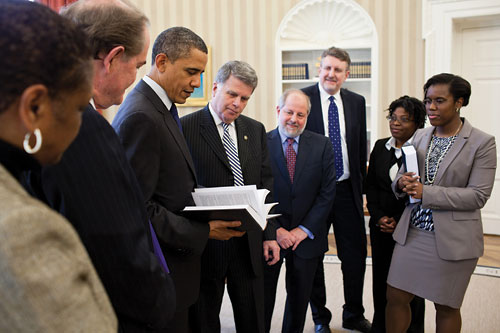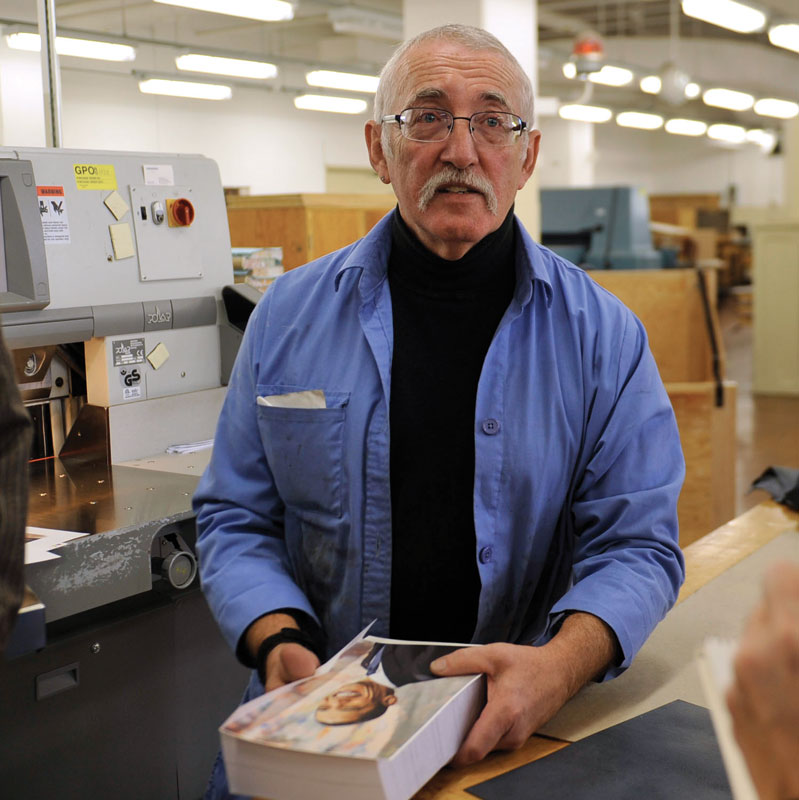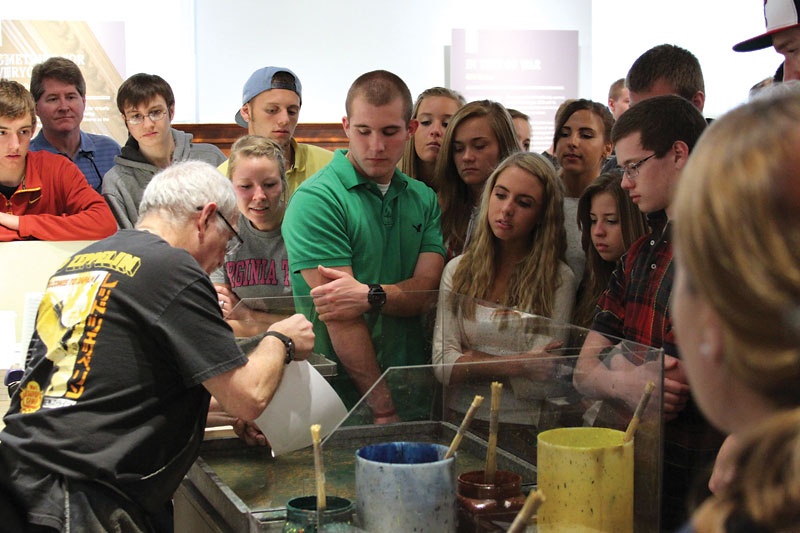All the President’s Papers
Can the United States afford a bookbinder-in-chief? By Karen EdwardsKaren Edwards has been a freelance writer for Antique Week, Early American Life, Woman’s Day, Health, Eating Well, and Entrepreneur.

There are sets of books in America that any book lover might like to own. They are custom-designed, hand-bound in leather, and stamped in gold. They’re also historically significant. Chances are, however, you’ll never own one. That’s because these books are presented only to the president of the United States.
The Public Papers of the President, as these volumes are called, include presidential messages to Congress, executive orders, speeches, nominations, public photos, letters, and other formal communications. Twice each year, the Office of the Federal Register, a division of the National Archives and Records Administration, collects the papers of the sitting president, sorts through them, checks and double-checks the papers for accuracy, prints them, and then sends them to the Government Printing Office to be bound. It’s a tradition that began with the administration of Herbert Hoover and has been followed through every administration since—with the exception of Franklin Roosevelt, who had his papers published privately.
“The books make a presidential statement,” said Brandon Rottinghaus, associate professor of political science at the University of Houston, whose primary research area includes the presidency. He owns several sets of the cloth-bound versions printed for the public, of which a few hundred are still produced and sold annually.
Peter James, dubbed “the nation’s bookbinder” by the Washington Post, has the official title of head forwarder in the Government Printing Office, and he is the man who patiently hand-binds the Public Papers every six months. The books vary in page count, depending on the activities of the president. President Barack Obama’s first volume, for example, totaled 1,017 pages—longer than George W. Bush’s 816-page first volume, but not as long as Bill Clinton’s 1,291 pages.
No matter the size, however, each volume takes James and his five-member staff about ten days to produce. “The papers come to me as folded signatures,” said James. In fact, a dozen signatures are sent to James, who binds the three best examples. The imported goatskin for the books is cut by hand, then James trims the rough edges, has the pages stitched to the cover, and attaches the silk endpapers. The final step is stamping the name of the president on the front cover in gold.
“We take the book from sewn signatures to the end,” said James. Once he has completed the books, the archivist selects the best of the three (the other two are kept safe in reserve) and delivers it to the president.
During the administration of George W. Bush, James was included in the party presenting the first six-month book to the president. “It was a special exception,” said James, who has bound books for three presidents. “The public printer wanted someone there with hands-on experience in producing the book.”
James said it’s doubtful such an occurrence will happen again, especially since questions have also been raised as to whether or not the Public Papers will continue on in print form. At a cost to taxpayers of about $40,000 a volume, it’s not hard to see a paperless future for the Public Papers. James, for his part, is philosophical about the growing possibility of an online-only version. “It’s progress. You can’t stand in the way,” he said.
“Books like these were made for the Internet,” said Daniel Weinberg, owner of the Abraham Lincoln Book Shop in Chicago, Illinois. “The Public Papers are more a research work than a collectible book,” he added, pointing to the Encyclopedia Britannica as an example that “Not all books are meant to be preserved.”
Better to collect presidential biographies or autobiographies, said Weinberg. “These are snapshots into the real history of the president.”
It’s not that the Public Papers don’t reflect history, but it’s a more formal look at the president than what’s available in a biography, and the Public Papers are edited. “The material goes through the Department of Communications,” explained Rottinghaus, and if the president misspoke or mispronounced a word, for example, it will be cleaned up. Yet the same is true of presidential autobiographies. “Most are sanitized versions of what really happened,” he said, “Or they’re not very forthcoming.” He cited as an example the autobiography of President Lyndon Johnson. Johnson was known in Washington as a first-rate raconteur, said Rottinghaus. “People looked forward to his book, but when it came out, it disappointed them because it was so muted.”
Yet there is something to be said for the minutiae that streams from the White House and its presidential residents. “The Public Papers let anyone take a look at how the business of the president is conducted,” Rottinghaus said. “They serve as a map to how the president talks about the issues of the day. And they’re valuable in allowing uniform access to the information.”










